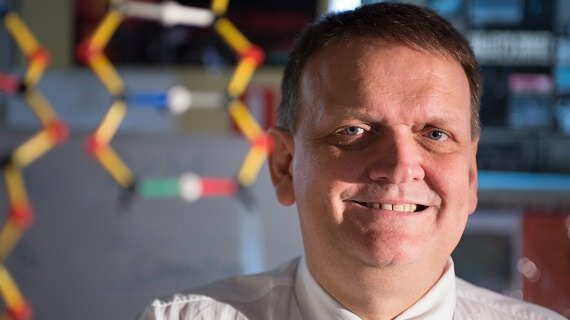Last updated October 23, 2017 at 10:40 am
Brett McKay is the recipient of the 2017 Prime Minister’s Prize for Excellence in Science Teaching in Secondary Schools for his achievements in inspiring his students to love science and to use it in their daily lives.
Brett is Head Teacher Science at Kirrawee High School in NSW. He is an inspiring teacher whose passion and skills have driven development and knowledge in his students and colleagues. As a physics and science teacher he has overseen a four-fold increase in students taking physics with many going on to have careers in science around the world.
 Perhaps more importantly, he’s brought science to life for students not considering a career in science. He believes that everyone should have a solid grounding in science to make informed decisions in the modern world.
Perhaps more importantly, he’s brought science to life for students not considering a career in science. He believes that everyone should have a solid grounding in science to make informed decisions in the modern world.
Brett has played a major role in curriculum development, particularly linking the curriculum to the real world. Twenty-five per cent of Year 10 students at Kirrawee seek science-based work experience, leading to an increase in students doing rigorous science courses in Year 11.
He uses every opportunity to introduce his students to working scientists including researchers from the University of New South Wales, the Sydney Observatory, the Green Point Observatory and the Australian Institute of Physics.
Brett works with the Science and Engineering Challenge and Growing Tall Poppies to bring in forensic science into the classroom and he sends students off for work experience with ANSTO, the home of Australia’s nuclear reactor.
These initiatives have contributed to not only the four-fold increase in physics participation but also a 150 per cent increase voluntary and co-curricular science activities.
Brett is making real inroads in getting girls to engage in science. Six Year 10 girls recently attended a Growing Tall Poppies event at ANSTO. After the event they all reported that it had turned science from formulas to real world application. All would consider a career in science.
Brett has also brought alumni back to the school for Women in Science lectures so his female students can see the possibilities of a career in science. These and other activities have seen a 10 per cent boost in girls studying physics in just the last year.
He deliberately works to put his colleagues in leadership roles: mentoring them in curriculum; in developing practical classes and lesson plans; and in preparing their students for the challenges of HSC. One of his staff reported, “I’m thankful to be working with a Head Teacher Science who is interested in my professional development and sees the importance of supporting beginning science teachers who will contribute to science education for many years to come.”
His impact reaches far beyond his school. He has guided curriculum development and the future shape of teaching through membership of the NSW Science Board Curriculum Board, guiding state syllabus development and curriculum resourcing, and a national pilot study of innovative online learning.
He also mentors his fellow science teachers through his involvement in state and national science teacher associations and through the NSW Department of Education’s mEsh program developing programs involving flipped learning, pre-testing and other innovations. His colleagues see him as an encouraging, resourceful and engaging teacher who brings science alive for students
“A great science class is one that confuses students” says Brett. “They make predictions, run the experiment and find that something different happens. You know it’s working when the students are engaged in what they’re doing and they start asking questions in the playground.”
He’s proud of past students who are working in science around the world, studying fusion, fossils, biomechanics, and fluid dynamics. But he says it’s not all about creating scientists, “It’s also about giving students a passion for science that they can use in everyday life for example as electricians. If you’re literate in science you can do whatever you want to.”
RELATED VIDEO: 2017 Prime Minister’s Prizes for Science Part 1
Image credit: Prime Minister’s Prizes for Science/WildBear
Australia’s Science Channel is proud to be a media partner for the Prime Minister’s Prizes for Science 2017.
Follow us on Facebook, Twitter and Instagram to get all the latest science.
































































































































































































































































